#letterboxd festiville
Photo
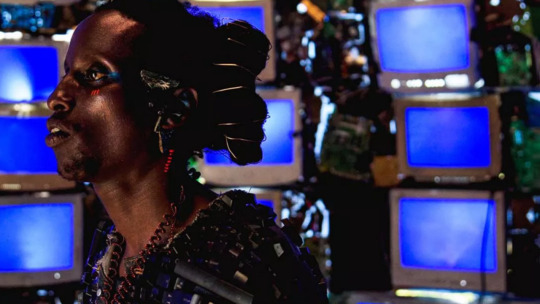
The Eyes of TIFF.
Programmers for the 46th Toronto International Film Festival chat about the degrees of intensity they look for in a festival film, and help us zoom in on the gems from TIFF’s 2021 program, by genre and region.
“Intensity can be achieved in so many different ways. I know it when I feel it. You feel it in your gut.” —Cameron Bailey
It’s almost business as usual for TIFF this year. In-person events and red carpets return, but a healthy virtual program is also available for Canadian-based folk unable to travel, as the Covid-19 pandemic continues its onslaught.
TIFF co-head and artistic director Cameron Bailey has been with the festival for just over half its life, and says while some of the technology has changed in that time—“you’re no longer sitting in front of a TV monitor with VHS tapes… or waiting for 35mm prints to be spooled up and projected for you”—the “basic process of falling in love with movies” has not.
It’s a challenge, Bailey says, to winnow down the films he falls in love with for the final TIFF lineup. And even then, it is an annual challenge for film lovers tight on time to narrow down their own selections. So, ahead of the fest, Bailey joined fellow TIFF programmers for a Twitter Spaces conversation with our editor in chief Gemma Gracewood, in order to help Letterboxd members make some watchlist decisions.
Joining Bailey were Thom Powers (TIFF Docs), Peter Kuplowsky (Midnight Madness), Robyn Citizen (senior programming manager), Diana Sanchez (Special Presentations, Spain, Latin America, Portugal and the Caribbean), Diana Cadavid (International Cinema) and Nataleah Hunter-Young (Africa, “the Middle East” and the Black Diaspora).
Edited highlights of the conversation follow, so have your watchlists close at hand.

‘The Eyes of Tammy Faye’, written by Abe Sylvia and directed by Michael Showalter.
Thank you all for joining me today. You watch a lot of films as you’re going through the selection process. How does one make itself stand out to you?
Cameron Bailey: For every programmer it’s going to be something different. For me, it comes down to an intangible quality of intensity. That can be emotional intensity, it can be the intensity of formal elements, the cinematography, the performances, the writing. Some sense of concentrated emotion and momentum, where you get the sense that a filmmaker is trying to find a way to distill the essence of what they’re trying to do and communicate it to an audience through all of the tools that cinema provides. That doesn’t mean the movie has to be fast-paced or have a lot of dramatic jolts, as intensity can be achieved in so many different ways. I know it when I feel it. You feel it in your gut.
What would you say are some of the performances that have struck you the most this year?
CB: Jessica Chastain is the lead in a film we’re premiering called The Eyes of Tammy Faye, directed by Michael Showalter. If you were watching TV in the ’80s and ’90s, you will remember Tammy Faye Bakker, and her husband, Jim Bakker, who were TV televangelists. You couldn’t miss Tammy, as she had these giant eyes and makeup with giant eyelashes, and this is essentially her story. It’s hard to know at first that it’s Jessica Chastain underneath all of that makeup, but she gives a performance that’s not just about the exterior. It’s about a woman who is shaped by a difficult upbringing, shaped by this incredibly deep need she has for affirmation, to be on TV, to be in front of the camera, and that guides her decisions into extremes. She’s fantastic in it.
Benedict Cumberbatch is back with two films. He is the lead in Jane Campion’s The Power of the Dog. It’s an understated, slow-burn performance in some ways, which he can do so well. He’s also in a film that’s on the opposite end of the dramatic spectrum, The Electrical Life of Louis Wain. It’s based on a real person, and when you watch the film you will be amazed that this person actually existed. Wain, in the early part of the twentieth century, was a prodigious painter who turned his talent towards painting thousands of cats. Cute cats, big eyed cats, fuzzy, adorable cats. He’s largely responsible for cats becoming as big as they are as domesticated pets. It’s a wild story.
I’m still recovering from watching The Power of the Dog’s trailer earlier today, and had to promise myself that I wouldn’t take up this entire time talking about Jane Campion’s obsession with hands. The Spencer trailer dropped as well, which has a lot of buzz around it.
CB: Yes, Spencer is a remarkable portrait. Some of us remember Princess Diana, some of us have watched The Crown, and so have a very recent image, but this is a completely different performance that Kristen Stewart gives. She’s remarkable in it. I think everybody’s going to want to see this film.

‘Charlotte’, written by David Bezmozgis and Erik Rutherford, directed by Tahir Rana and Éric Warin.
Are there any other titles you’d like to get the buzz started for, Cameron?
CB: On the animation side, I would say people should look out for a film called Charlotte, by Tahir Rana and Éric Warin. It’s a Canadian film telling a story based in World War II Europe about a woman in a Jewish family [exiled] in France during the occupation of France by the Nazis. She can feel what is coming. She decides to paint everything about her life, and her family’s life, trying to document what she feels is going to be very fragile, and what she might lose altogether.
As it turns out, before the end of the war she was taken away to a death camp by the Nazi regime, and she didn’t survive, but her paintings have survived and they were turned into a book, along with the story of her family. The animation is just gorgeous. I think that’s one that awards bodies are going to be paying attention to. It’s one of the best animated films I’ve seen in quite a while.
Thom, what are some of the documentary titles that you and the team think those awards bodies will have their eyes on?
Thom Powers: A big one to pay attention to is The Rescue, by Chai Vasarhelyi and Jimmy Chin, who won the Oscar for their last film, Free Solo. Their new film is looking at the Thai cave rescue [in 2018], when a group of young soccer players and their coach got trapped by monsoon floods in a cave. When we were watching the news, we were seeing the journalists reporting from outside the cave. What this film does is bring you inside that rescue using footage that’s never been seen before. Chai Vasarhelyi and Jimmy Chin are masters at the documentary adventure genre, and also [at] bringing a real human side to the people involved, which they do again here.
I’ll also mention Becoming Cousteau, by Liz Garbus, and Julia, a film about Julia Child, directed by Julie Cohen and Betsy West, who made the Oscar-nominated documentary RBG a few years ago. So many of us during the pandemic had to rediscover ourselves in the kitchen, and Julia Child’s life was about making people feel more comfortable in the kitchen, which makes it a terrific film to watch at this time.
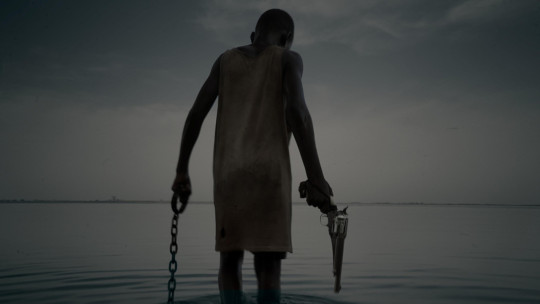
‘Saloum’, directed by Jean Luc Herbulot.
Peter, what’s a movie from this year’s Midnight Madness lineup you’d love to recommend?
Peter Kuplowsky: We’ve got a lot of firsts at Midnight this year. We have Saloum, the first time a West African film has ever been in Midnight. We’ve also got Zalava, which is the first Iranian film to play in Midnight. Our opening film for Midnight Madness is Julia Ducournau’s Titane, which is playing at the Princess of Wales theater, and will be a spectacle to behold. When I’m looking for Midnight Madness, I like hearing the audience make certain noises in the room, whether that’s a gasp or screams or laughter. I feel that every note on the scale is going to be played during Titane by the audience.
Brilliant. Now, we’re going to bring in some audience questions. First up is Vincent, who says that one of their favorite films is Georges Franju’s Eyes Without a Face, and asks if there are any films in this year’s TIFF lineup you could recommend for a fan of that film?
PK: I’ve really been encouraging people to check out the films I just mentioned, Zalava and Saloum, and I think Zalava especially would fit here, as it’s more of a horror-drama. It begins as something that is steeped in the supernatural, but as it escalates it becomes something of a pitch-black comedy while still maintaining a gravitas to it. I think it’s one of the most fascinating discoveries in the genre space this year.
CB: I’d also add Good Madam, by Jenna Bass, from South Africa. It is a chilling movie, with a bit of an Eyes Without a Face vibe. If you like that sort of approach to cinema, I think you’ll like that.
PK: Vengeance Is Mine, All Others Pay Cash just won the Golden Leopard at Locarno. With a title like that, this is a film that feels like it’s going to be sort of a strictly pulp crime film, but it’s so much more. It’s deeply romantic, incredibly eclectic, and beautifully shot on 16mm film. It feels like a film that was hidden away, shot in the late ’70s or early ’80s. It’s a throwback to 1980s Hong Kong action films, while also, I can’t stress this enough, being one of the most romantic films in the festival. You’ll fall in love with this relationship while it’s also working in fight sequences and magical realism.
Nataleah, what’s something you would recommend from your TIFF selections from Africa, “the Middle East” and the Black Diaspora?
Nataleah Hunter-Young: One I’d highly recommend is Costa Brava, directed by Mounia Akl, from Lebanon. Even amidst what’s going on in Lebanon right now, the film offers a beautiful and engrossing portrait of a family that includes a grandmother who’s a non-actor, but has impeccable comedic timing (that travels through the subtitles if you don’t speak Arabic).

‘Snakehead’, written and directed by Evan Leong.
Robyn, what’s a movie that surprised you most during your selections this year?
Robyn Citizen: I always recommend that people check out our Discovery section because that’s where we find new talent and nurture new voices. The film that really surprised me this year was Snakehead, by Evan Jackson Leong. Some people will know him from a documentary called Linsanity, and he did another documentary about evangelism in Korea. Snakehead has been a ten-year labor of love for him. He had to do a Kickstarter for the film, which is loosely based on the life of a woman named Sister Ping, who had a human trafficking ring that was the biggest trafficking ring for about 20 years.
The film tackles what’s going on now with vulnerable populations being trafficked into America, in particular Chinatown in the US, and the main character, played by Shuya Chang, has to fight to find her daughter. It’s an exciting film, and very moving. It’s extremely tightly edited, and it looks fantastic.
We’ve got our next question here from a member who says their favorite genre is science-fiction. While Dune is at the top of their watchlist, are there any other sci-fi selections you could recommend?
PK: I would recommend After Blue (Dirty Paradise), which is a perverse science-fiction by Bertrand Mandico. It reminds me a lot of the French animated film Fantastic Planet. This one is about a planet which is inhospitable to men because of the way hair grows. The plot follows a young teenage girl who accidentally unleashes a notorious criminal that she and her hairdresser mother have to stalk through the alien landscape that is full of bizarre creatures and liquids and gases. I feel it’s kind of like the inverse of Dune, and an opportunity to explore a bizarre ecosystem.
NHY: I would totally insist that this member see Neptune Frost, from Saul Williams and Anisia Uzeyman. It’s a difficult film to put into words, but I’ve been summing it up by calling it an Afro-sonic sci-fi musical.
Whoa, that sounds like a whole new subgenre.
NHY: That’s just the beginning. There’s a lot to experience in this film. It’s a cosmic romance that follows an intersex hacker and a coltan miner who make their way to this kind of dream space where they connect with others as they travel through these lush mountainous regions of Rwanda and Burundi. It’s a beautiful anti-narrative that is impeccably colored and totally consuming. It’s a must-see for anybody who loves cinema.
Diana, what would you say is the best debut feature that you’ve seen among this year’s international selections?
Diana Cadavid: There are so many wonderful new talents, but I think I’ll go with an Argentinian filmmaker named Agustina San Martín. Her film, To Kill the Beast, is a co-production between Argentina, Brazil and Chile, and she worked for nine years to put this all together. She started working on it when she was 21, and we were actually having a conversation yesterday about her process, and how it’s a film that deals with the growth of a woman, and female desire. There’s this idea of the beast, something that’s either from inside or from outside forces, trying to control the human mind and body. It’s a very interesting film, gorgeously shot and very atmospheric.
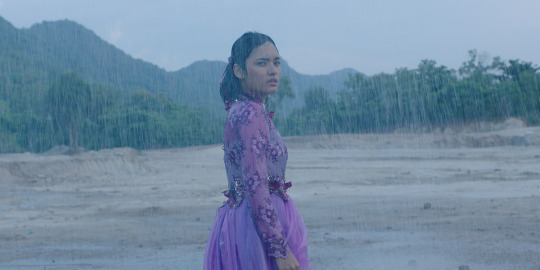
‘Yuni’, written by Prima Rusdi and Kamila Andini, directed by Andini.
We’ve got another question here from David, who says their favorite films are humanistic dramas, citing Hirokazu Kore-eda as one of their favorite directors. Would anybody have any recommendations for David?
CB: I can recommend at least one film, called Yuni, an Indonesian film from Kamila Andini. This is a naturalist drama about a high-school girl who is one of the top students in her class, and has a great group of friends. We slowly begin to see that her life is being constrained by one man after another, and then something happens at school, which begins to narrow her possibilities for her future. She’s trying to figure out things like sexuality and romance and what she wants to do with her future, and all of these obstacles keep getting placed in her path. It’s told in a very gentle way, but very incisive as well. Each scene really matters, taking you deeper inside this girl’s life.
RC: Our senior programmer Giovanna Fulvi programmed a film called Aloners, a South Korean film by Hong Sung-eun. This is her first feature, and it’s very much a film of our time. It is about a woman who works in the gig economy at a credit-card customer-service call center. It’s a very transient existence. She doesn’t talk to anybody, she eats by herself, she doesn’t really want to associate with the people in her apartment building. One day, one of her neighbors who has tried to talk to her many times passes away, and she has to re-interrogate the way that she’s been living her life, and figure out if it’s worth starting to form some human connections.
Next up is a question from Matt Neglia, from the Next Best Picture podcast. Matt says that he’s a massive fan of epics, whether they’re three hours long or just telling an expansive story with lots of world-building. Apart from Dune, are there any other films in the lineup that you would describe as epic?
CB: While Joachim Trier’s The Worst Person in the World might not strike you on reading its synopsis as an epic, I think it actually is an emotional epic. It’s the story of a young woman who’s trying to figure out her life. Her romance with one boyfriend doesn’t quite fit the bill for her, and she begins this looking and exploring. Trier and his writer and lead actor do remarkable work, blowing open the idea of a person trying to define who they are at this turning point in their life. They make these stakes massive and they have all kinds of interesting, innovative, formal elements in [the film] as well. It’s incredibly cinematic. If you’ve seen Joachim Trier’s other films, this is kind of the conclusion of a trilogy that he’s made.

‘Listening to Kenny G’, directed by Penny Lane.
Next up, we have Sarah, who is looking for movies about music, and also some body horror.
CB: We’ve got a number of great music docs this year. I have to mention Dionne Warwick, the queen of Twitter, who is the subject of Dionne Warwick: Don’t Make Me Over. It tells the story of this incredibly talented, determined and glamorous musician who broke so many barriers. She toured in the south during the Jim Crow era, making gains as a Black woman in the music industry and in the pop-music industry, not the so-called race-record or Black-music industry, which simply wasn’t done at the time. This documentary tells that story, and also shows her later work in the ’80s contributing to the fight against stigma and hysteria during the AIDS crisis.
PK: I’ll follow up Cameron by mentioning the Alanis Morissette film Jagged. We’ve also got a film about the great jazz pianist, Oscar Peterson, called Oscar Peterson: Black + White. Lastly, there’s a film about Kenny G, called Listening to Kenny G.
Diana Sanchez: For the body horror, I’d like to mention the debut film by Ruth Paxton, titled A Banquet. It’s about a young woman who insists her body is no longer her own, and is a service to a higher power. Her mother has no idea what to think. She stops eating, and her mother doesn’t know [whether] to believe her or not. I love Ruth Paxton’s work, the way she shoots the film, the way she shoots the food. It’s almost, as she refers to it, pornographic. It looks delicious and gross all at the same time.
I’d also like to flip to comedy quickly to mention Official Competition. The film stars Penélope Cruz, Antonio Banderas and Oscar Martínez. Cruz plays a filmmaker who puts together a well-known theater actor and a well-known box-office glamor guy, played by Banderas. The film speaks to the tension between high art and more popular art, testing those boundaries. It’s incredibly funny.
We’d love to squeeze a few more films out of everyone for our watchlists. Could you each recommend one film and try to sell it in ten words or less?
CB: Let me try. Sundown, by Michel Franco. Tim Roth falls apart beautifully in Mexico.
TP: I’m going to go with the Mexican documentary, Comala. Filmmaker Gian Cassini explores the legacy of his father, who was a Tijuana hitman.
PK: I’ll go with Saloum, which is basically From Dusk Till Dawn in West Africa.
RC: I’m going to say The Wheel, a movie by Steve Pink. If you like Who’s Afraid of Virginia Woolf?, this is like that with a younger couple in a much more humane, intimate key.
DS: I’ll say I’m Your Man, a sci-fi where Maren Eggert dates a robotic Dan Stevens.
PK: I know Diana has been recommending a film called OUT OF SYNC, about an artist who begins to experience the sound of the world going out of sync. She starts hearing sounds from the past because people and things are out of sync with their surroundings.
NHY: I’ll go with The Gravedigger’s Wife, directed by Khadar Ahmed. It showcases the horn of Africa unlike you’ve ever seen it on screen.
Finally, for Cameron: with fall coming, what is the best TIFF 2021 movie to watch under a blanket, either because it’s cozy or because you’re terrified, or both?
CB: Great question, which gives me a chance to talk about Earwig, the new film by Lucile Hadžihalilović. If you’ve seen Innocence or Evolution, her two most recent films, you’re prepared in terms of tone, but you’ve not even seen Lucille make a film quite like this. It’s eerie, disturbing, hypnotic, mesmerizing. You can’t stop watching, but you’re always afraid that something awful and horrifying is about to happen… and maybe it might.
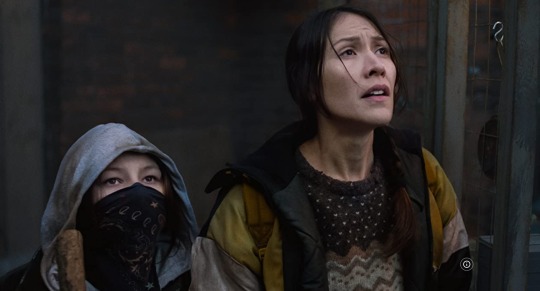
‘Night Raiders’, written and directed by Danis Goulet.
To bring it all back home, what would you say is the Canadian film of 2021?
CB: It’s always hard to say, but I think in a year where we have Danis Goulet’s feature Night Raiders, that’s got to be the one. Danis has made some exceptional short films over the last few years that people might know. Her feature takes on the horrific, devastating story of residential schools and children torn from Indigenous families and put in institutions where the goal was to erase their Indigenous identity. She takes that terrible, real history that we’re grappling with right now in Canada, and turns it into a piece of speculative fiction, a kind of propulsive thriller.
By turning it into fiction rather than reality she can use all of the tools of cinema to tell a terrific story that’s exciting and has high stakes, but also has this deep resonance of a truth that we are, I hope, coming to terms with in this country.
The Toronto International Film Festival runs from September 9 to 18. This conversation has been edited for length and clarity. Follow TIFF on Letterboxd, and follow our Festiville HQ for regular festival updates.
#tiff#tiff21#tiff 21#tiff 2021#toronto#toronto international film festival#cameron bailey#midnight madness#jessica chastain#jane campion#benedict cumberbatch#saul williams#danis goulet#canadian film#letterboxd#festiville#letterboxd festiville#gemma gracewood#thom powers#nataleah hunter-young
3 notes
·
View notes
Photo

Best of Tribeca 2021.
Delightful confections, Covid films worth watching and characters doing their best under every kind of circumstance: our Festiville team present their ten picks from this year’s virtual and—hallelujah!—in-person Tribeca Festival.
When this pandemic is finally, finally over, we will be so grateful to bunk with pals in foreign towns and pack into crowded cinemas for festival premieres again. But we also reserve the right to miss the weirdly comforting communal online-ness of virtual fest-going.
For context, it is often a stretch for media outlets to send more than a couple of representatives to in-person festivals and, once there, it can be a lonely and hectic exercise. This past year has carried a different vibe: home-alone viewings that have still felt somehow together, with between-screening chats firing up online about what we’ve seen, and what our members are buzzing over.
We may have missed the deeply New York vibe of queuing outside the SVA on a crisp, spring evening for a gala premiere, but with its summery, socially distanced outdoor screenings and an online library of unexpected treasures, Tribeca 2021 felt pretty great.
So with the help of Letterboxd reviewers, we present our ten best discoveries (in no particular order). As is always the way with a festival, we also noticed fascinating thematic parallels between particular films, so we’ve curated some potential double-features for your watchlists.
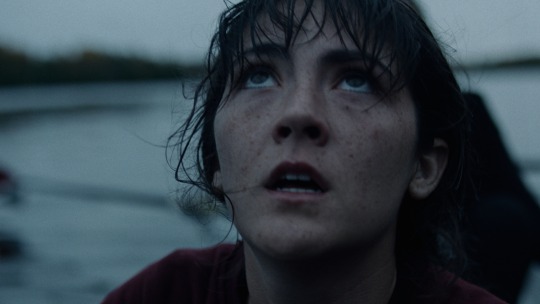
The Novice
Written and directed by Lauren Hadaway—Awarded Best US Narrative Feature Film, Best Cinematography in a US Narrative Feature Film (Todd Martin) and Best Actress in a US Narrative Feature Film (Isabelle Furman)
Lauren Hadaway’s stunning directorial debut The Novice stars Isabelle Fuhrman as Alex Dall, an amateur rower who pushes herself above and beyond her physical limits in order to top her class. The comparisons to Damien Chazelle’s Whiplash are inevitable, and no coincidence, as Hadaway was that film’s sound editor. The Novice is similarly an intense sensory experience with next-level cinematography, editing and sound.
Just as Chazelle was inspired by his college hobby for his breakout feature, Hadaway’s own rowing days at the Southern Methodist University in Texas inspired Alex’s story. The Novice is by no means a retread, but a valuable sister film that adds more to the conversation. Furhman’s devastating performance digs deep into the damaging forces that her obsession drives her towards, at the very least earning her the festival’s Best Actress trophy, if not the acceptance of her fictional peers.
Alex’s journey can also operate as a modern critique of the American spirit. At a time when Boomer work ethics are rejected with a workers’ revolution on the horizon and a maturing generation that prioritizes mental health, American exceptionalism—voluntarily giving 110 percent and no room to breathe—offers an ultimately destructive path to victory. The Novice is not only the best out of Tribeca—according to this year’s jury, who gave it the Best US Narrative Feature Film prize—but the best of the year so far and will be difficult to out-match. “I never wanted it to end,” writes Claira, “and yet, I couldn’t help but let out a deep exhale of relief when it did.” —Jack Moulton
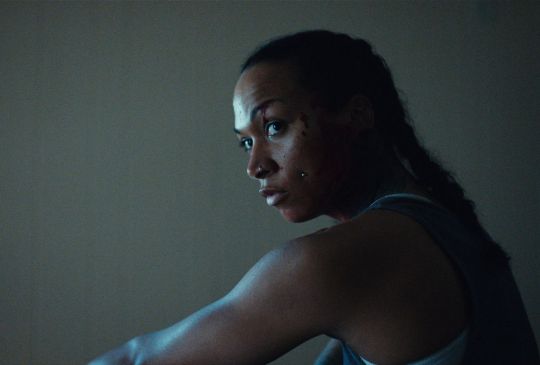
Catch the Fair One
Written and directed by Josef Kubota Wladyka, from a story by Kali Reis and Wladyka—Awarded a Special Jury Mention for Kali Reis’ “magnetic performance” and the Audience Award for Best Narrative Feature category
Boxing champ Kali Reis, who is descended from Cherokee, Nipmuc and Seaconke Wampanoag tribes and Cape Verde, collaborated with Polish-Japanese writer and director Josef Kubota Wladyka to craft this fictional thriller based on real-life stories from America’s sex-trafficking underground. “It’s an understatement to say this film is important,” writes Anna. “Absolutely horrifying subject matter handled with striking emotional depth.”
This plot is specific to Reis’s activist concerns—she is a long-time supporter of the Missing and Murdered Indigenous Women and Girls movement—but as a work of art, Catch the Fair One also stands on its own thanks to the creative team’s focus on tone, color, mood and movement. As Kayleigh, Reis is all fists ready and rage contained—until she lets rip, when it matters—and much like Violation, a taut revenge horror from earlier this year, Catch the Fair One keeps its eye on the consequences of violence for the women who enact it.
While there are a few grumbles about its runtime (too short for some, not long enough for others), this is a tight package with satisfying, look-away violence and no easy outcome. “The last fifteen minutes were absolutely breathtaking,” Shashwat writes, “and quite masterful as they packaged the whole thing in a suitably feminist, and most importantly, refined manner.” —Gemma Gracewood

Poser
Directed by Noah Dixon and Ori Segev, written by Noah Dixon
Some classic Specious Clique Adoption tropes get a welcome, textured update in this stylistically confident debut centered around a subtly unsettling lead performance from Sylvie Mix that bodes well for her future prospects. In Poser, she plays Lennon, a quiet, young, wannabe music podcaster hanging around the Columbus, Ohio indie band/art scene who latches onto the cool and confident Bobbi Kitten (playing herself, sorta), lead singer of (actual) electronic witch-rock act Damn the Witch Siren.
Dixon and Segev should be applauded solely for their casually authentic portrait of “the scene” (various bands appear as themselves)—many filmmakers have embarrassed themselves attempting something similar. But Poser is also more than that, starting off like a coming-of-age story before slowly morphing into a low-key social thriller.
Kong observes: “because so many of us in the Millennial/Zoomer crowd have anxieties related to [coolness and authenticity] and whether or not we possess them, Lennon is uncomfortably relatable. Perhaps that is what makes Poser so haunting.” Andrew, meanwhile, writes that Poser manages to transcend its “basic set-up” thanks not only to its unique setting, but also to “committing to that setting entirely and weaving it in to every other aspect of the film.” —Dominic Corry

Dating and New York
Written and directed by Jonah Feingold
After years of faithless discourse about the genre “dying out”, Dating and New York is a sweet summer reminder that rom-coms will always be of the moment. Debut writer-director Jonah Feingold draws from classics like When Harry Met Sally and Cinderella, but makes those references hyper-contemporary, wrapped up in the lives of young people who struggle to believe in Hollywood love stories.
Milo and Wendy, played with wit and snark by Jaboukie Young-White and Francesca Reale, meet on a dating app. Sparks fly, and they kiss each other engulfed in absurdly warm lighting and centered between mountains of too-full trash bags. The stylistic choices grow more exaggerated as the pair ghost each other, then reconnect and find their way into a friends-with-benefits situation.
Theatricality in the cinematography, mise en scène and editing help calcify Feingold’s ethos: not just that love is real, but also that love is ridiculous and that consequently, films about love should be ridiculous. The optimism and light satire of it all, as Tarco puts it, “make the triviality of dating culture feel like an actual high-stakes game, and with the year we all had, sometimes, it really feels that way.” It’s a film for anyone who spends their nights romanticizing missed connections or friendships that could turn into more. And if that’s not you, there’s still fun to be had here: follow Michelle’s suggestion and “take a shot every time you see a turtleneck.” —Selome Hailu
During Tribeca, we picked Jonah Feingold’s brain about everything rom-com in this Festiville Q&A.

as of yet
Directed by Chanel James and Taylor Garron—Awarded the 2021 Nora Ephron Award
Only watch as of yet, writes Lyd, if you’re prepared for the “knot in the pit of [your] stomach that formed from recalling peak Covid times… as of yet is occasionally painful and hilariously so because I swear to god I have had every single conversation featured in this movie”. The film, co-directed by Chanel James and Taylor Garron (who also writes and stars), is a Zoom-bound recollection of the way the past year and a half felt while separated from those you love (and those you have the potential to love).
It takes a pandemic for Naomi (Garron), a Black 20-something in Brooklyn, to realize that her white roommate and best friend Sara (Eva Victor) is a touch racist, a touch hypocritical and definitely irresponsible enough to party hard at the start of a pandemic. Garron’s screenplay is soaked through with naturalism. As Naomi navigates the beginning of a friendship breakup while also trying to embrace a new Tinder romance, we get a full spectrum of confident flirtation, awkward boundary-setting and everything in between. As Nina indicates, it’s one of the rare “pandemic-era films that feels pure to the time and not a story re-accommodation to the times”. We’ve said it before and we’ll say it again: in the right hands, these Covid films are worth making! —Selome Hailu
Because we haven’t Zoomed enough, we jumped online with James and Garron for a chat about their collaborative process, and James’ Letterboxd lockdown goals.
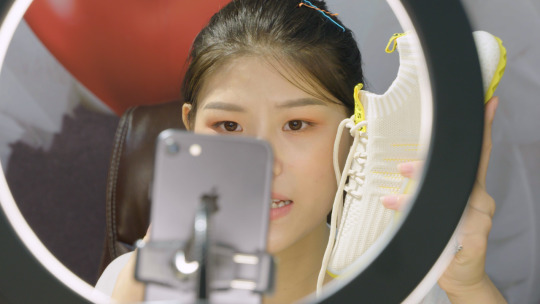
Ascension
Directed by Jessica Kingdon—Awarded the 2021 Albert Maysles Award for Best New Documentary Director and Best Documentary Feature
Jessica Kingdon’s enthralling, impeccably constructed documentary drifts through a mosaic of modern China that’s curiously, not all that removed from the American Dream. Encompassing a wide social strata of the Chinese working class—from areola-painting sex-doll manufacturers to high-end butlers—Ascension’s assembly of astonishing, dazzlingly captured sights discovers an industrious society clamoring for the betterment of life and economic growth through hard-toiling pursuits. As Daniel writes, “If Bong Joon-Ho’s Parasite and Godfrey Reggio’s Koyaanisqatsi had a baby, this would be it.”
It’s all told sans talking heads: Kingdon’s unobtrusive, inquisitive eye regards its subjects without judgment, while the occasional hint of smartly placed irony pulls the doc back from becoming a bleak procession into mind-boggling capitalist madness. “No commentary needed with such beautifully framed shots, perfectly chosen snippets of conversation and impressive access to factories, schools and corporate functions,” writes Careless Spine. Adding further hypnotic dimension is Dan Deacon’s score, a sonic wall of urgent, droney, string-laden electronics that, like the China of Ascension, feels otherworldly yet so hauntingly familiar. —Aaron Yap
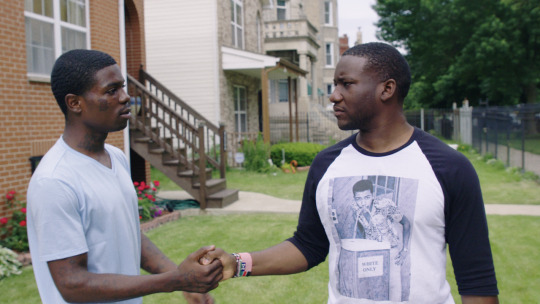
All These Sons
Directed by Joshua Altman and Bing Liu—Awarded Best Documentary Cinematography
As gun violence remains a devastating crisis in the United States, the response from the criminal justice system continues to be focused on reaction as opposed to prevention, with more police boots on the ground and incarcerations, particularly of young Black men. Documentary filmmakers Joshua Altman and Bing Liu (of Minding the Gap fame) center their latest piece of empathetic filmmaking on the efforts of two community-led Chicago programs aiming to cut the violence off at its source.
By working with the folks in their communities on the south and west sides of the city, the IMAN Green Re-entry and MAAFA Redemption Project look to not only demonstrate the promise of a different future for these men than the one that’s been laid out before them, but to also break down the trauma and inner turmoil they carry from a life spent in a community that has been given up on due to systemic racism from the powers that be.
In All These Sons, the filmmakers focus on three young men in particular— Charles, Shamont and Zay—taking a vérité approach to show us the impact of these programs on their day-to-day lives. The result is a film “packed with both emotion and a genuinely urgent message,” writes Paul, one which takes the weight of gun-violence statistics and shows us that each one of those numbers is a human being with the capacity for change, even if those structures want to abandon them. As Micah puts it, All These Sons “doesn’t instil dignity; it shows that it’s already present in each life.” —Mitchell Beaupre
We chatted with Altman and Liu about forgiveness, trust and getting out of town.

Werewolves Within
Directed by Josh Ruben, written by Mishna Wolff
Batten down the hatches and prepare for a night full of shrieks of terror and hilarity with this genre-bender adapted from the Ubisoft video game of the same name. How did writer Mishna Wolff and director Josh Ruben break the dreaded “video-game movie curse” with Werewolves Within? Step one was the flexibility granted from taking on an IP that doesn’t have legions of fanboys insisting on adherence to the source material.
Taking the basic premise of a group of townsfolk tasked with uncovering which of them is a ravenous werewolf, Wolff (last name coincidental, we’re sure) has created an experience melding the ice-cold isolation horror of The Thing with the quirky small-town eccentricities of Twin Peaks. Ruben’s knack for drawing from his love of cinema and the kinds of movies he wants to see on screen leads to each viewer having their own experience with this one. Todd draws similarities to Edgar Wright and The Wolf of Snow Hollow, while Mega_MovieZ is one of many to notch a Clue comparison in their review.
The hook comes in the way that, akin to Wright’s work, Werewolves Within pays reverence to genre history while also subverting some of its more antiquated tropes involving toxic masculinity and manic pixie dream girls. It’s all done with a knowing splash of humor, aided by a stacked cast of comedic character actors giving everyone the chance to choose their own favorite of the ensemble. Arianne writes that Michaela Watkins is the MVP while Jordan picked Milana Vayntrub as the standout. The good news is that everyone can be right with a roster this loaded with talent! —Mitchell Beaupre

Brighton 4th
Director Levan Koguashvili—Awarded Best International Narrative Feature Film and Best Actor in an International Narrative Feature Film (Levan Tedaishvili)
An “immigrant drama [that] succeeds on its authenticity”, according to Shane, Brighton 4th explores aspects of masculinity and fatherhood not often enough covered in cinema. This engrossing film traverses genres from tragedy to comedy in deadpan fashion, as an ageing Georgian wrestler travels to New York (Russian enclave Brighton Beach, Brooklyn, to be exact) to help out (save?) his gambling-addicted son.
Levan Tedaishvili is a wrestling legend back in his home country, and he steals the movie in his acting debut at age 74. A couple of madcap subplots both distract (kidnapped Kazakh!) and entertain (horny grandma?). A deeply original film where the stubbornness and stupidity of the masculine ego is traversed in story, song and tradition. “The build up is slow,” writes Jim, “but the last few scenes knocked me on my ass, so I guess they did something right!” Sometimes honor outweighs lucre in a romp that is a joy from start to finish. —Leo Koziol
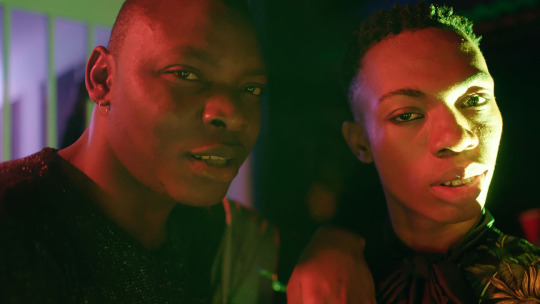
The Legend of the Underground
Directed by Nneka Onuorah and Giselle Bailey
Having to identify as gender non-conformists to avoid arrest sounds like something out of The Handmaid’s Tale, but this is reality, not fiction, in current-day Nigeria. Identifying as anything else—or gathering in large groups for a dance party—and you end up facing criminal charges under this nation’s harsh laws. But after WF_JamesBrown spoke out on social media when a non-conformists gathering resulted in arrests, they became a ‘they done not caught me’ social-media sensation in a rare reversal of hate prejudice.
Humor is one means of survival in Lagos, as is being meme-savvy, fashion-forward and doing all you can to live the best possible life under the shadow of constant oppression and fear of arrest. Some non-conformists have escaped to the US, and can visit home, but there is no easy route out (detention camps when seeking asylum is common). Spanning countries in its focus on several non-conformists, The Legend of the Underground is an engaging, heartfelt window into another world, and will find a wider audience on HBO thanks to a producer credit for John Legend. An important and seminal work—and it’s gorgeous. —Leo Koziol
Our Tribeca 2021 double features
Catch the Fair One and My Heart Can’t Beat Unless You Tell It To: films that seethe in a backwater America in which the most vulnerable members of society exist solely for the satisfaction of others barely a few rungs up the rickety ladder.
The Perfect David, a crazy, obsessive foil to The Novice.
Poser and Love Spreads: because music and girl bands.
Queen of Glory and India Sweets and Spices: both deal with first-generation American daughters rebelling against and learning to honor their mothers’ values.
as of yet and Dating and New York: millennial, Covid-set comedies that make big use of social media, texting and dating apps. Plus, Eva Victor supremacy. (Throw in 7 Days for a triple feature.)
The Legend of the Underground and Being Bebe: perfect twins.
False Positive and Ultrasound: how many pregnancy-related psychological thrillers does one festival need?
Roaring 20s and Italian Studies: because we miss roaming around cities.
Follow our Festiville HQ for regular film-festival coverage by the Letterboxd team.
#tribeca#tribeca festival#tribeca film festival#tribeca 2021#letterboxd#film festival#festiville#dating and new york#catch the fair one#the novice#bing liu#all these sons#poser
4 notes
·
View notes
Photo

Best of Cannes 2021.
From the second woman in 74 years to win the Palme d’Or, to a truly horny collection of films, our correspondent Brian Formo presents Letterboxd’s ten highest-rated narrative features from the 2021 Festival de Cannes.
If you follow our Festiville HQ, you will have gotten a pretty solid picture of reactions to the films that premiered at Cannes this year, along with a day-to-day feeling of what it was like being there. Annually, the Cannes Film Festival is one of the biggest events in film, but the 2021 festival was more than just the 74th edition—it was the first in-person-only film festival to occur post-Covid shutdowns. That brought about some complications around testing, and ticketing, but largely things went very smoothly.
By the end of the festival, the awards became historic beyond the Covid narrative when Titane’s Julia Ducournau became only the second woman ever to win the Palme d’Or in the festival’s history. While the Cannes awards are voted on by just ten film professionals, we were curious about what the Letterboxd verdict on the ten best films was.
So here are the ten highest-rated movies (with at least 100 views) from the 2021 Festival de Cannes, according to the Letterboxd community.

The Worst Person in the World
Directed by Joachim Trier, written by Trier and Eskil Vogt
Renate Reinsve took home Best Actress for The Worst Person in the World, and the film itself was the biggest crowd-pleaser of Cannes 2021. Douglas called it “a landmark rom-com… A reassuring film about the overrated nature of having your shit together, remarkable, sprightly and moving”. The Oscar Expert predicted that when more of the Letterboxd community has seen it, they will “rocket that average rating to a 4.0”. We shall see. The film, which chronicles a twenty-something’s transition into a thirty-something with equal charm and mistakes, was picked up at the festival by NEON for North America and Mubi for distribution in the UK/India.

Drive My Car
Written and directed by Ryusuke Hamaguchi
Drive My Car had the longest runtime at Cannes (one minute shy of three hours) but that didn’t affect its Letterboxd standing in the slightest. Like The Worst Person in the World, this Haruki Murakami adaptation is divided into chapters concerning a playwright, his wife, and the strange ways their work differs. Anthony called it “easily the most moving and compelling film I saw at Cannes. The extended prologue is a brilliant start to the film, so beautiful, sensual, haunting and quietly devastating. Just fantastic, followed by a slow but consistent story of guilt, reconciliation, memory and the struggle of continuing to live and create.” Hamaguchi won the Best Screenplay prize from this year’s jury.

The Souvenir Part II
Written and directed by Joanna Hogg
F9 wasn’t the only sequel screening at Cannes this year. Hogg’s follow-up to The Souvenir debuted in the Quinzaine des Réalisateurs (Directors’ Fortnight) section, an independent arm of the festival. Reactions on Letterboxd are currently better than for the first film. However, your mileage with The Souvenir: Part II will likely be determined by how you felt about its predecessor, as they are perfectly constructed as bookends. It’s fitting too that its popularity follows Drive My Car, as these are two films about the artistic process (which, actually, The Worst Person in the World makes a few nods to as well). Isabel Sandoval called it “a self-reflexive marvel of rebirth and artistic invention” before stating that she “loved it more than the first”. And Iana Murray commended Hogg, writing that she “carefully unpacks her trauma and grief in a gorgeous, sensitive and surprisingly meta sequel”.

Paris, 13th District
Directed by Jacques Audiard, written by Audiard, Céline Sciamma, Léa Mysius, Adrian Tomine
After making his first film set outside of France, 2018’s The Sisters Brothers, Audiard returned to Paris to make a black-and-white adaptation of Adrian Tomine’s Killing and Dying, a collection of graphic short stories. Paris, 13th District (AKA The Olympiades) follows three individuals (Noémie Merlant, Makita Samba, Lucie Zhang) looking for a meaningful connection, whose paths cross in various ways, through close interactions (as co-workers or roommates). The Cannes debut was on Bastille Day, right after the fireworks exploded by the beach, and with its electronic Rone score and a recognizable touch, it became one of the most-liked films of the fest. Mariedebarbieux wrote that “it strikes all the right emotional chords.” And Josh Golbraith loved it for being “so horny”, a major theme throughout the festival.

Titane
Written and directed by Julia Ducournau
Many of the most enthusiastic Letterboxd reviews of the Palme d’Or winner come with spoiler warnings, so we’ll skip the plot outline and just quote Kevin Yang who called it “an undeniably ambitious, visually striking and slightly silly mashup of serial-killer thriller, pregnancy body horror, and found-family character drama. Titane is clearly shepherded by a unique vision, carried by an absolutely tremendous, visceral performance by Agathe Rousselle.” Though, as many of the less favorable reviews also state, like Ducournau’s last film Raw you’ll have to have a strong stomach for this ride.

Red Rocket
Directed by Sean Baker, written by Baker and Chris Bergoch
Red Rocket is the lone comedy in this top ten. It follows a former LA porn star (Simon Rex) coming home to small-town Texas completely broke, and trying to set up his triumphant career revival after discovering a young girl (Suzanna Son) at the donut shop. Ethan Colburn noted that “it’s intentionally icky, but hilarious in some very dark moments”. And for Baker’s follow-up to The Florida Project, Shubhra likened it to an earlier movie of his, stating that it’s “a perfect contrast and companion to Starlet”.

A Hero
Written and directed by Asghar Farhadi
Farhadi’s newest morality play tied for the Grand Prix (second place) with Compartment No. 6 (see below). This time the writer-director of A Separation treads into the social-media sphere of judgment. Because a personal debt is at stake and the lies escalate, some comparisons to Uncut Gems were made. Without bringing up that beloved movie, David Ehrlich wrote that “Farhadi plays to his strengths with A Hero, as he takes a classic premise and spins it around and around and around with enough centrifugal force to keep you rooted in place even as your sympathies fly in every conceivable direction”.

Vortex
Written and directed by Gaspar Noé
At what was possibly the horniest Cannes ever, who would’ve guessed that Gaspar Noé would’ve actually been the least horny? Noé’s latest film did not play in any section at Cannes—it merely premiered on the penultimate night of the Festival. Vortex’s midnight showing and the director’s reputation did not properly prepare people for what many are calling his most earnest work, full of compassion and love. Françoise Lebrun and Dario Argento play an elderly couple stricken by dementia, and Noé uses a split screen to tell their story. Leo wrote approvingly that Vortex “made my insides turn in a calm and soothing way”. Josh called it “flawless from beginning to end … A masterpiece” but also warned that the film “is unlike anything Gaspar has ever made. If you go into it expecting another Climax or Enter the Void, you should temper your expectations.”

The French Dispatch
Written and directed by Wes Anderson
The biggest and splashiest premiere at Cannes 2021 was Wes Anderson’s latest pastel pastiche, The French Dispatch. Though the film is stuffed with pretty designs, it’s worth noting that this anthology film features Anderson’s first foray into black-and-white photography since his Bottle Rocket short. The cast list is immense but those with the most screen time include Benicio Del Toro, Adrien Brody, Léa Seydoux, Tilda Swinton, Timothée Chalamet, Frances McDormand and Jeffrey Wright. The story is a series of shorts pulled from a fictional French magazine in the 1960s. Luke Hicks labelled it “a delectable, feverish whirlwind of color, design and journalistic locution bound to keep giving on repeat watches. Stories about arts and artists, poetry and politics, and tastes and smells—delivered in Wes Anderson’s singular style and accompanied by new tricks.” Florence called it “heartwarming… There is so much to look at, and so much to process, that it almost becomes a game”.

Compartment No. 6
Directed by Juho Kuosmanen
The only Cannes award winner I didn’t see, which puts it high on my watchlist. Filmlandempire fleshed out the appeal of this Finnish drama, writing that it follows “a young, coarse Russian man who strikes an unlikely friendship with a Finnish lesbian woman on board the TransSiberian. Full of underlying warmth, bittersweet, atmospheric but never romanticized; a gem!” And perhaps furthering the appeal, Simon called it “Before Sunrise with vodka!”, while Belies took things further by declaring it “cuter than [the] Before trilogy”.

Special mentions
Just outside of the top ten highest-rated films were a few big swings, with Best Director winner Leos Carax mixing original music with performance art and a puppet baby in Annette, Kogonada making a worthy companion to Ex Machina with After Yang, and Paul Verhoeven adding nunsploitation to his provocative filmography with Benedetta. Plus, if people swoon as hard for The Worst Person in the World as predicted, be sure to check out more of Anders Danielsen Lie in Mia Hansen-Løve’s Bergman Island.
With the 74th edition of Cannes in the books, the quadruple film-festival punch of Venice, Telluride, TIFF and NYFF begins! Many of the Cannes films will screen at the last three festivals, and we’ll be watching to see how these initial ratings stand the test of other festivals.
Related content
The Letterboxd list of the ten highest-rated films out of Cannes 2021
The ten French femmes de cinéma to watch in 2021
The official list of the 46th annual Toronto International Film Festival, 2021
Follow Brian and Festiville on Letterboxd
#cannes#cannes film festival#cannes 2021#festival de cannes#letterboxd#brian formo#palme d'or#grand prix#asghar farhadi#julia ducournau#titane#paul verhoeven#wes anderson
23 notes
·
View notes
Photo
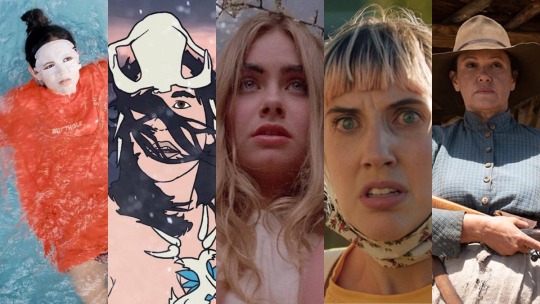
Best of SXSW 2021.
From properly good Covid comedies to an epic folk-horror doc and an Indigenous feminist Western, the Letterboxd Festiville team reveals their ten best of SXSW Online.
We dug out old lanyards to wear around the house, and imagined ourselves queuing up the block from The Ritz (RIP). We dialled into screenings and panels, and did our level best to channel that manic “South By” energy from our living rooms.
The SXSW festival atmosphere was muted, and that’s to be expected. But the films themselves? Gems, so many gems, whether shot in a fortnight on the smell of an oily stimulus check, or painstakingly rotoscoped over seven years.
When we asked SXSW Film director Janet Pierson what she and her team were looking for this year, she told us: “We’re always looking for films that do a lot with little, that are ingenious, and pure talent, and discovery, and being surprised. We’re just looking for really good stories with good emotional resonance.” If there was one common denominator we noticed across this year’s SXSW picks, it was a smart, tender injection of comedy into stories about trauma, grief, unwanted pregnancy, chronic health conditions, homelessness, homophobia and, yes, Covid.
It’s hard to pick favorites, but here are the ten SXSW features and two short films we haven’t stopped thinking about, in no particular order.

Recovery
Directed by Mallory Everton and Stephen Meek, written by Everton and Whitney Call
“Covid 19 is in charge now” might be the most hauntingly funny line in a SXSW film. In Recovery, two sisters set out on a haywire road trip to rescue their grandmother from her nursing home in the wake of a severe Covid 19 outbreak. There’s no random villain or threat, because isn’t being forced to exist during a pandemic enough of a threat in itself? If ever we were worried about “Covid comedies”, SXSW managed to flush out the good ones. (Read about the Festiville team’s other favorite Covid-inflected comedies, including an interview with the directors of I’m Fine (Thanks for Asking).)
Alex Marzona praises the “off-the-charts chemistry” between leads Mallory Everton and Whitney Call. Best friends since they were nine, the pair also wrote the film, with Everton co-directing with Stephen Meek. Every laugh comes from your gut and feels like something only the cast and crew would usually be privy to. “You can tell a lot of the content is improvised, which just attests to their talent,” writes Emma. Recovery doesn’t make you laugh awkwardly about how awful the last year has been—rather, it reminds you that even in such times there are still laughs to be had, trips to be taken, family worth uprooting everything for. Just make sure you’ve packed enough wet wipes for the road, and think long and hard about who should babysit your mice. —EK

The Spine of Night
Written and directed by Morgan Galen King and Philip Gelatt
Don’t get too attached to any characters from its star-studded cast—nobody is safe (or fully-clothed) in The Spine of Night’s raw, ultra-violent and cynical world. Conjured over the last seven years, directors Philip Gelatt and Morgan Galen King’s rotoscoped epic recaptures the dazzling imagination and scope of their influences Ralph Bakshi and Heavy Metal. Approaching an anthology-style structure to explore how ‘absolute power corrupts absolutely’—a proverb more potent now than when Gelatt and King began their project—the film packs a franchise’s worth of ideas in its 90-minute runtime. Though the storytelling justifiably proves itself overly dense for some, it will find the audience it’s after, as other Letterboxd members have declared it “a rare treat” and “a breath of fresh air in the feature-length animation scene”. For sure, The Spine of Night can join Sundance premieres Flee and Cryptozoo in what’s already a compelling year for unique two-dimensional animation. —JM
Kambole Campbell caught up with Gelatt and King (who are also Letterboxd members!) during SXSW to talk about animation inspirations and rotoscoping techniques.
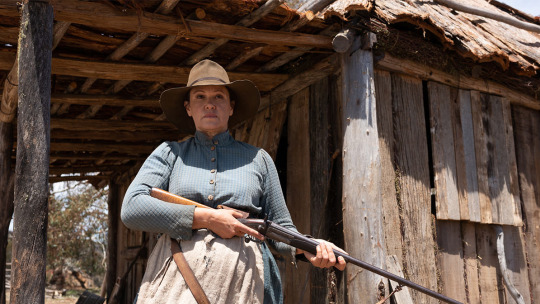
The Drover’s Wife: The Legend of Molly Johnson
Written and directed by Leah Purcell
Snakes, steers and scoundrels beware! Writer-director-star Leah Purcell ably repurposes the Western genre for Aboriginal and female voices in The Drover’s Wife. Molly Johnson is a crack-shot anti-heroine for the ages, in this decolonized reimagining of a classic 1892 short story by Henry Lawson. And by reimagining, we mean a seismic shift in the narrative: Purcell has fleshed out a full story of a mother-of-four, pregnant with her fifth, a missing husband, predatory neighbors, a mysterious runaway and a young English couple on different paths to progress in this remote Southern land. Purcell first adapted this story for the stage, then as published fiction; she rightly takes the leading role in the screen version, too.
As a debut feature director, Purcell (Goa-Gunggari-Wakka Wakka Murri) already has a firm grip on the macabre and the menacing, not shying away from violence, but making very careful decisions about what needs to be depicted, given all that Molly Johnson and her family are subjected to. She also sneaks in mystic touches, and a hint of romance (local heartthrob Rob Collins can take us on a walk to where the Snowy widens to see blooming wildflowers anytime). Judging by early Letterboxd reviews, it’s not for everyone, but this is Australian colonization through an Indigenous feminist’s eyes, with a fierce, intersectional pay-off. “Extremely similar to a vast majority of the issues and themes explored in The Nightingale,” writes Claira. “I’m slowly realizing that my favorite type of Westerns are Australian.” —LK, GG

Swan Song
Written and directed by Todd Stephens
Udo Kier is often the bridesmaid, rarely the bride. Now, after a lifetime of supporting roles ranging from vampires and villains to art-house muse, he finally gets to shine center-stage in Swan Song. Kier dazzles as a coiffure soothsayer in this lyrical pageant to the passage of queer times in backwater Sandusky, Ohio. “He is absolutely wonderful here,” writes Adrianna, “digging deep and pulling out a mesmerizing, deeply affecting and emotionally textured performance, proving that he’s an actor with much more range than people give him credit for.”
A strong supporting cast all have melancholy moments to shine, with Linda Evans (Dynasty), Michael Urie (Ugly Betty) and Jennifer Coolidge (Legally Blonde) along for the stroll. Surreal camp touches add joy (that chandelier, the needle drop!) but by the end, the tears roll (both of joy and sadness). Writer-director Todd Stephens ties up his Sandusky trilogy in this hometown homage, a career peak for both him and Kier. Robert Daniels puts it well, writing that Swan Song is “campy as hell, but it’s also a heartfelt LGBTQ story about lost lovers and friends, vibrant memories and the final passage of a colorful life.” —LK
Leo Koziol spoke with Todd Stephens and Udo Kier during SXSW about Grace Jones, David Bowie and dancing with yourself.
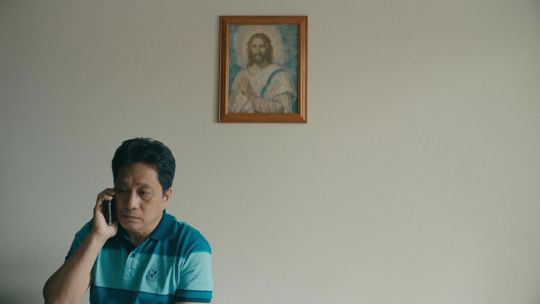
Islands
Written and directed by Martin Edralin
Islands is a Mike Leigh-esque story that presents a Canadian Filipino immigrant family full of quirk and character, centered around Joshua, a reticent 50-year-old homebody son. The story drifts in and out of a deep well of sadness. Moments of lightness and familial love make the journey worthwhile. “A film so Filipino a main plot device is line-dancing,” writes Karl. “Islands is an incredibly empathetic film about what it’s like to feel unmoored from comfort. It’s distinctly Filipino and deals with the psychology of Asian culture in a way that feels both profound and oddly comforting.” In a year in which we’ve all been forced to physically slow down, Islands “shows us how slow life can be,” writes Justin, “and how important it is to be okay with that.” Rogelio Balagtas’s performance as Joshua—a first-time leading role—won him the SXSW Grand Jury Award for Breakthrough Performance. —LK

Ninjababy
Directed by Yngvild Sve Flikke, written by Flikke with Johan Fasting and Inga H. Sætre
Ninjababy is as ridiculous as its title. When 23-year-old Rakel finds herself accidentally pregnant, scheduling an abortion is a no-brainer. But she’s way too far along, she’s informed, so she’s going to have to have the baby. The ensuing meltdown might have been heartbreaking if the film wasn’t so damn funny. Ninjababy draws on the comforting and familiar (“Lizzie McGuire if she was a pregnant young adult,” writes Nick), while mixing shock with originality (Erica Richards notices “a few aggressive and vulgar moments [but] somehow none of it seemed misplaced”).
An animated fetus in the style of Rakel’s own drawings appears to beg and shame Rakel into motherhood while she fights to hold onto her confidence that not wanting to be a mother doesn’t make her a bad person. Ninjababy’s greatest feat is its willingness to delve into that complication: yes, it’s righteous and feminist and 21st-century to claim your own body and life, but that doesn’t mean it’s easy to turn away from something growing inside of you. It’s a comedy about shame, art, finding care in unlikely places—and there’s something in it for the gents, too. The titular ninjababy wouldn’t leave Rakel alone, and it’s unlikely to leave you either. Winner of the SXSW Global Audience Award. —SH
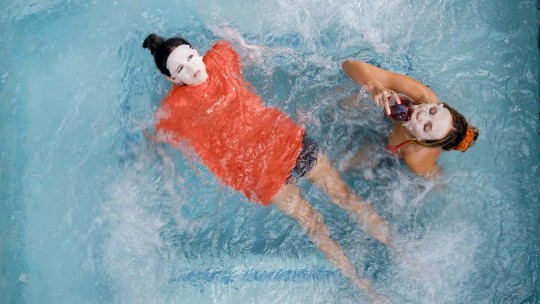
The Fallout
Written and directed by Megan Park
Canadian actress Megan Park brought the youthful wisdom of her days on the teen drama series The Secret Life of the American Teenager to her first project behind the camera, and it paid off. Following the scattered after-effects of a school shooting, The Fallout may be the most acute, empathetic depiction of childhood trauma on screen in recent memory. “It sneaks up on you with its honesty and how it spends time with its lead, carried so beautifully by Jenna Ortega. Even the more conventional moments are poignant because of context,” writes Kevin L. Lee. Much of that “sneaky” honesty emerges as humor—despite the heavy premise, moments of hilarity hang on the edges of almost every scene. And Ortega’s portrayal of sweet-but-angsty Vada brings self-awareness to that humor, like when Vada’s avoidant, inappropriate jokes with her therapist reveal her desperation, but they garner genuine laughs nonetheless.
In this debut, Park shows an unmatched understanding of non-linear ways that young people process their pain. Sometimes kids try drugs! Sometimes they scream at their parents! But more often than not, they really do know what they want, who loves them, and how much time they need to grieve (see also: Jessie Barr’s Sophie Jones, starring her cousin Jessica Barr, out now on VOD and in theaters). The Fallout forsakes melodrama to embrace confusion, ambiguity and joy. Winner of both the SXSW Grand Jury and Audience Narrative Feature Awards, and the Brightcove Illumination Award. —SH

Ludi
Directed by Edson Jean, written by Jean and Joshua Jean-Baptiste
When Ludi begins, it’s quiet and dreamy. The film’s opening moments conjure the simple pleasures of the titular character’s Haitian heritage: the music, the colors, the people. Ludi (Shein Monpremier) smiles to herself as she starts her morning with a tape recording her cousin mailed from Haiti to Miami, and listens as her family members laugh through their troubles before recording an upbeat tape of her own. But that’s where the dreaminess ends—Ludi is an overworked, underpaid nurse picking up every shift she possibly can in order to send money home. Writer-director Edson Jean fixates on the pains and consequences of Ludi’s relentless determination, which comes to a head when she moonlights as a private nurse for an old man who doesn’t want her there.
Ashton Kinley notes how the film “doesn’t overly dramatize or pull at false emotional strings to make its weight felt. The second half of the feature really allows all of that to shine, as the film becomes a tender and empathetic two-hander.” George’s (Alan Myles Heyman) resentment of his own aging body steps in as Ludi’s antagonist. Jean throws together jarring contrasts: George throwing Ludi out of the bathroom, followed by Ludi’s memories of home, followed by another lashing out, followed by a shared prayer. The tension is unsustainable. By interspersing the back-breaking predicament of a working-class immigrant with the sights and sounds of the Caribbean, Ludi elegantly, painfully reveals what the cost of a dream can be. —SH
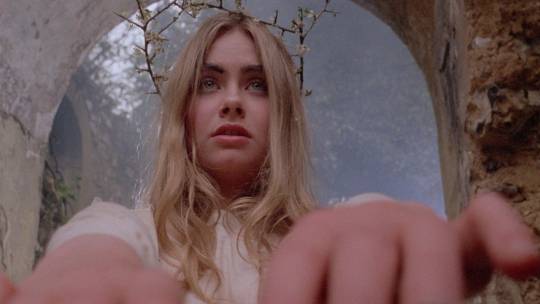
Woodlands Dark and Days Bewitched: A History of Folk Horror
Written and directed by Kier-La Janisse
Building on the folk horror resurgence of films like The Witch and Midsommar, Kier-La Janisse’s 193-minute documentary Woodlands Dark and Days Bewitched is a colossal, staggering undertaking that should school even the most seasoned of horror buffs. “Thorough is an understatement,” says Claira.
Combining a historian’s studied, holistic patience with a cinephile’s rabid, insatiable thirst, the film, through the course of six chapters, broadens textbook British definitions, draws trenchant socio-political and thematic connections, debunks myths and transports viewers to far-flung parts of the globe in a way that almost feels anthropological. As Jordan writes, “Three hours later and my mind is racing between philosophical questions about the state of hauntology we generationally entrap ourselves in, wanting to buy every single one of the 100+ films referenced here, and being just a bit in awe of Janisse’s truly breathless work.” An encyclopedic forest worth losing yourself in—get ready for those watchlists to balloon. Winner of the SXSW Midnighters Audience Award. —AY

Introducing, Selma Blair
Directed by Rachel Fleit
There’ll likely be some level of hype when this intimate collaboration between actress Selma Blair and filmmaker Rachel Fleit comes out later in the year on Discovery+, and that’s okay, because that is Blair’s intention in sharing the details of her stem-cell transplant for multiple sclerosis. There’d be little point in going there if you are not prepared to really go there, and Introducing, Selma Blair is a tics-and-all journey not just into what life is like with a chronic condition, a young son, and a career that relies on one’s ability to keep a straight face. It’s also an examination of the scar tissue of childhood, the things we are told by our parents, the ideas we come to believe about ourselves. “I almost felt like I shouldn’t have such intimate access to some of the footage in this documentary,” writes Andy Yen. “Bravo to Selma for allowing the filmmakers to show some truly raw and soul-bearing videos about her battle with multiple sclerosis that make us feel as if we are as close to her as family.” —GG
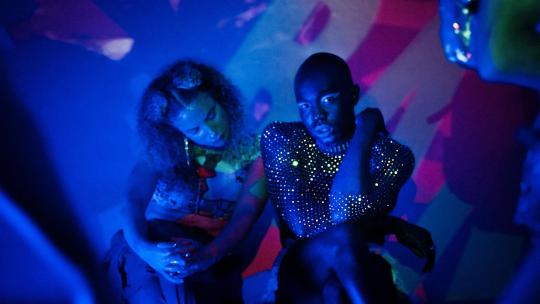
Femme
Directed by Sam H. Freeman and Ng Choon Ping
I May Destroy You fans, rejoice: Paapa Essiedu, who played Arabella’s fascinating best friend Kwame, takes center stage in Sam H. Freeman and Ng Choon Ping’s intoxicating short film Femme. It’s a simple premise—Jordan, a femme gay man, follows his drug dealer (Harris Dickinson, mastering the sexually repressed brusque young man like no one else) home to pick up some goods on a night out. Except, of course, it’s not that simple. The co-directors build a world of danger, tension and electricity, with lusciously lensed scenes that lose focus as the threat rises. Frankie calls it “hypnotizing and brutal and gorgeous” and we couldn’t agree more. A crime thriller wrestling with hyper-masculinity seen through the eyes of an LGBTQ+ character, with a sucker-punch ending to boot, the world needs more than twenty minutes of this story. —EK

Play It Safe
Directed by Mitch Kalisa
If you (unwisely) thought that the vulnerable, progressive environment of drama school would be a safe space for Black students, Play It Safe confirms that even a liberal bunch of actors (and their teacher) are capable of being blind to their own egregiously racist microagressions. Mitch Kalisa’s excellent short film explores structural prejudice head-on, in an electric acting exercise that rests on where the kinetic, gritty 16mm camera is pointing at every pivotal turn. At first, we’re with Black drama student Jonathan Ajayi as he receives the assignment; then we are with the rest of the class, exactly where we need to be. “Literally in your face and absolutely breathtaking,” writes Nia. A deserving winner of the SXSW Grand Jury and Audience narrative shorts prizes. —GG
Follow the Festiville team on Letterboxd
#sxsw#south by southwest#sxsw 2021#sxswonline#SXSW Film#janet pierson#film festival#letterboxd#letterboxd best
8 notes
·
View notes
Photo

Best of Sundance 2021.
From pandemic-era stories, via portraits of grief, to the serendipitous 1969 trilogy, the Letterboxd crew recaps our favorite films from the first major festival of the year.
Sundance heralds a new season of storytelling, with insights into what’s concerning filmmakers at present, and what artistic innovations may be on the horizon. As with every film festival, there were spooky coincidences and intersecting themes, whether it was a proliferation of pandemic-era stories, or extraordinary portraits of women working through grief (Land, Hive, The World to Come), or the incredible serendipity of the festival’s ‘1969 trilogy’, covering pivotal moments in Black American history: Summer of Soul (...Or When the Revolution Could Not Be Televised), Judas and the Black Messiah and the joyful Street Gang: How We Got to Sesame Street.
The hybrid model of this year’s Sundance meant more film lovers across the United States—a record number of you, in fact—‘attended’ the prestigious indie showcase. Our Festiville team (Gemma Gracewood, Aaron Yap, Ella Kemp, Selome Hailu, Jack Moulton and Dominic Corry) scanned your Letterboxd reviews and compared them with our notes to arrive at these seventeen feature-length documentary and narrative picks from Sundance 2021. There are plenty more we enjoyed, but these are the films we can’t stop thinking about.
Documentary features

Summer of Soul (...Or, When the Revolution Could Not Be Televised)
Directed by Ahmir-Khalib Thompson (AKA Questlove)
One hot summer five decades ago, there was a free concert series at a park in Harlem. It was huge, and it was lovely, and then it was forgotten. The Harlem Cultural Festival of 1969 brought together some of the world’s most beloved Black artists to connect with Black audiences. The star power and the size of the crowds alone should have been enough to immortalize the event à la Woodstock—which happened the same summer, the film emphasizes. But no one cared to buy up the footage until Ahmir-Khalib Thompson, better known as Questlove, came along.
It would have been easy to oversimplify such a rich archive by stringing together the performances, seeking out some talking heads, and calling it a day. But Questlove was both careful and ebullient in his approach. “Summer of Soul is a monumental concert documentary and a fantastic piece of reclaimed archived footage. There is perhaps no one better suited to curate this essential footage than Questlove, whose expertise and passion for the music shines through,” writes Matthew on Letterboxd. The film is inventive with its use of present interviews, bringing in both artists and attendees not just to speak on their experiences, but to react to and relive the footage. The director reaches past the festival itself, providing thorough social context that takes in the moon landing, the assassinations of Black political figures, and more. By overlapping different styles of documentary filmmaking, Questlove’s directorial debut embraces the breadth and simultaneity of Black resilience and joy. A deserving winner of both the Grand Jury and Audience awards (and many of our unofficial Letterboxd awards). —SH
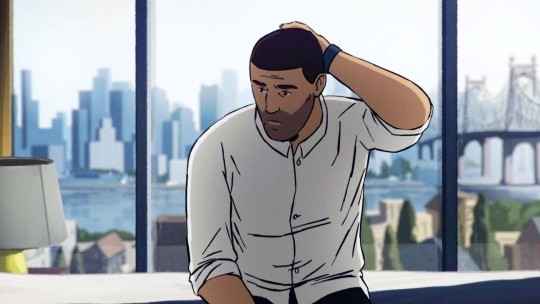
Flee
Directed by Jonas Poher Rasmussen
Flee is the type of discovery Sundance is designed for. Danish documentarian Jonas Poher Rasmussen tells the poignant story of his close friend and former classmate (using the pseudonym ‘Amin Nawabi’) and his daring escape from persecution in 1990s Afghanistan. Rasmussen always approaches tender topics with sensitivity and takes further steps to protect his friend’s identity by illustrating the film almost entirely in immersive animation, following in the footsteps of Waltz With Bashir and Tower. It’s a film aware of its subjectivity, allowing the animated scenes to alternate between the playful joy of nostalgia and the mournful pain of an unforgettable memory. However, these are intercepted by dramatic archive footage that oppressively brings the reality home.
“Remarkably singular, yet that is what makes it so universal,” writes Paul. “So many ugly truths about the immigration experience—the impossible choices forced upon people, and the inability to really be able to explain all of it to people in your new life… You can hear the longing in his voice, the fear in his whisper. Some don’t get the easy path.” Winner of the World Cinema (Documentary) Grand Jury Prize and quickly acquired by Neon, Flee is guaranteed to be a film you’ll hear a lot about for the rest of 2021. —JM

Taming the Garden
Directed by Salomé Jashi
There’s always a moment at a film festival when fatigue sets in, when the empathy machine overwhelms, and when I hit that moment in 2021, I took the advice of filmmaker and Sundance veteran Jim Cummings, who told us: “If you’re ever stressed or tired, watch a documentary to reset yourself.” Taming the Garden wasn’t initially on my hit-list, but it’s one of those moments when the ‘close your eyes and point at a random title’ trick paid off. Documentary director Salomé Jashi does the Lorax’s work, documenting the impact and grief caused by billionaire former Georgian PM Bidzina Ivanishvili’s obsession with collecting ancient trees for his private arboretum.
“A movie that is strangely both infuriating and relaxing” writes Todd, of the long, locked-off wide shots showing the intense process of removing large, old trees from their village homes. There’s no narration, instead Jashi eavesdrops on locals as they gossip about Ivanishvili, argue about whether the money is worth it, and a feisty, irritated 90-year-old warns of the impending environmental fallout. “What you get out of it is absolutely proportional to what you put into it,” writes David, who recommends this film get the IMAX treatment. It’s arboriculture as ASMR, the timeline cleanse my Sundance needed. The extraordinary images of treasured trees being barged across the sea will become iconic. —GG

The Most Beautiful Boy in the World
Directed by Kristian Petri and Kristina Lindström
Where Taming the Garden succeeds through pure observation, The Most Beautiful Boy in the World relies on the complete participation of its title subject, actor Björn Andrésen, who was thrust into the spotlight as a teenager. Cast by Italian director Lucino Visconti in Death in Venice, a 1971 adaptation of Thomas Mann’s novella about obsession and fatal longing, Andrésen spent the 1970s as an object of lust, with a side-gig as a blonde pop star in Japan, inspiring many manga artists along the way.
As we know by now (Alex Winter’s Showbiz Kids is a handy companion to this film), young stardom comes at a price, one that Andrésen was not well-placed to pay even before his fateful audition for Visconti. But he’s still alive, still acting (he’s Dan in Midsommar), and ready to face the mysteries of his past. Like Benjamin Ree’s excellent The Painter and the Thief from last year, this documentary is a constantly unfolding detective story, notable for great archive footage, and a deep kindness towards its reticent yet wide-open subject. —GG

All Light, Everywhere
Directed by Theo Anthony
Threading the blind spots between Étienne-Jules Marey’s 19th-century “photographic rifle”, camera-carrying war pigeons and Axon’s body-cam tech, Theo Anthony’s inquisitive, mind-expanding doc about the false promise of the all-seeing eye is absorbing, scary, urgent. It’s the greatest Minority Report origin story you didn’t know you needed.
Augmented by Dan Deacon’s electronic soundscapes and Keaver Brenai’s lullingly robotic narration, All Light, Everywhere proves to be a captivating, intricately balanced experience that Harris describes as “one part Adam Curtis-esque cine-essay”, “one part structural experiment in the vein of Koyaanisqatsi” and “one part accidental character study of two of the most familiar yet strikingly unique evil, conservative capitalists…”. Yes, there’s a tremendous amount to download, but Anthony’s expert weaving, as AC writes, “make its numerous subjects burst with clarity and profundity.” For curious cinephiles, the oldest movie on Letterboxd, Jules Jenssen’s Passage de Vénus (1874), makes a cameo. —AY
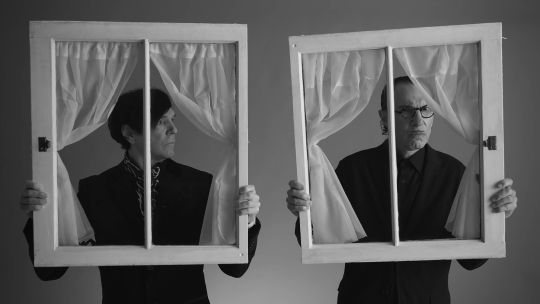
The Sparks Brothers
Directed by Edgar Wright
Conceived at a Sparks gig in 2017 upon the encouragement of fellow writer-director Phil Lord, Edgar Wright broke his streak of riotous comedies with his first (of many, we hope) rockumentary. While somewhat overstuffed—this is, after all, his longest film by nearly fifteen minutes—The Sparks Brothers speaks only to Wright’s unrestrained passion for his art-pop Gods, exploring all the nooks and crannies of Sparks’ sprawling career, with unprecedented access to brothers and bandmates Ron and Russell Mael.
Nobody else can quite pin them down, so Wright dedicates his time to put every pin in them while he can, building a mythology and breaking it down, while coloring the film with irresistible dives into film history, whimsically animated anecdotes and cheeky captions. “Sparks rules. Edgar Wright rules. There’s no way this wasn’t going to rule”, proclaims Nick, “every Sparks song is its own world, with characters, rules, jokes and layers of narrative irony. What a lovely ode to a creative partnership that was founded on sticking to one’s artistic guns, no matter what may have been fashionable at the time.” —JM
Narrative features

The Pink Cloud
Written and directed by Iuli Gerbase
The Pink Cloud is disorienting and full of déjà vu. Brazilian writer-director Iuli Gerbase constructs characters that are damned to have to settle when it comes to human connection. Giovana and Yago’s pleasant one-night stand lasts longer than expected when the titular pink cloud emerges from the sky, full of a mysterious and deadly gas that forces everyone to stay locked where they stand. Sound familiar? Reserve your groans—The Pink Cloud wasn’t churned out to figure out “what it all means” before the pandemic is even over. Gerbase wrote and shot the film prior to the discovery of Covid-19.
It’s “striking in its ability to prophesize a pandemic and a feeling unknown at the time of its conception. What was once science fiction hits so close now,” writes Sam. As uncanny as the quarantine narrative feels, what’s truly harrowing is how well the film predicts and understands interiorities that the pandemic later exacerbated. Above all, Giovana is a woman with unmet needs. She is a good partner, good mother and good person even when she doesn’t want to be. Even those who love her cannot see how their expectations strip her of her personhood, and the film dares to ask what escape there might be when love itself leaves you lonely. —SH

Together Together
Written and directed by Nikole Beckwith
Every festival needs at least one indie relationship dramedy, and Together Together filled that role at Sundance 2021 with a healthy degree of subversion. It follows rom-com structure while ostensibly avoiding romance, instead focusing on how cultivating adult friendships can be just hard, if not harder.
Writer-director Nikole Beckwith warmly examines the limits of the platonic, and Patti Harrison and Ed Helms are brilliantly cast as the not-couple: a single soon-to-be father and the surrogate carrying his child. They poke at each other’s boundaries with a subtle desperation to know what makes a friendship appropriate or real. As Jacob writes: “It’s cute and serious, charming without being quirky. It’s a movie that deals with the struggle of being alone in this world, but offers a shimmer of hope that even if you don’t fall in fantastical, romantic, Hollywood love… there are people out there for you.” —SH
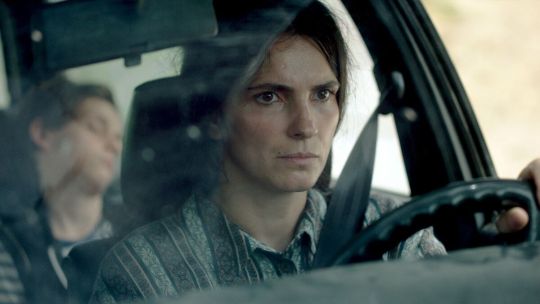
Hive
Written and directed by Blerta Basholli
Hive, for some, may fall into the “nothing much happens” slice-of-life genre, but Blerta Basholli’s directorial debut holds an ocean of pain in its small tale, asking us to consider the heavy lifting that women must always do in the aftermath of war. As Liz writes, “Hive is not just a story about grief and trauma in a patriarchy-dominated culture, but of perseverance and the bonds created by the survivors who must begin to consider the future without their husbands.”
Yllka Gashi is an understated hero as Fahrjie, a mother-of-two who sets about organizing work for the women of her village, while awaiting news of her missing husband—one of thousands unaccounted for, years after the Kosovo War has ended. The townsmen have many opinions about how women should and shouldn’t mourn, work, socialize, parent, drive cars and, basically, get on with living, but Fahrjie persists, and Basholli sticks close with an unfussy, tender eye. “It felt like I was a fly on the wall, witnessing something that was actually happening,” writes Arthur. Just as in Robin Wright’s Land and Mona Fastvold’s The World to Come, Hive pays off in the rare, beaming smile of its protagonist. —GG
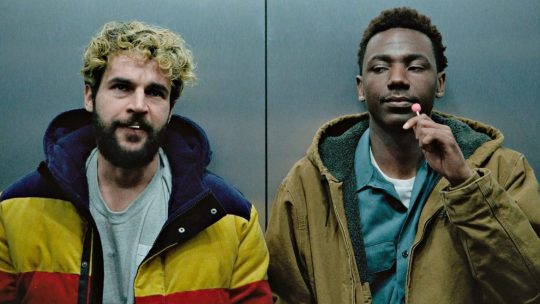
On the Count of Three
Directed by Jerrod Carmichael, written by Ari Katcher and Ryan Welch
It starts with an image: two best friends pointing guns at each other’s heads. There’s no anger, there’s no hatred—this is an act of merciful brotherly love. How do you have a bleak, gun-totin’ buddy-comedy in 2021 and be critically embraced without contradicting your gun-control retweets or appearing as though your film is the dying embers of Tarantino-tinged student films?
Comedian Jerrod Carmichael’s acerbic directorial debut On the Count of Three achieves this by calling it out every step of the way. Guns are a tool to give insecure men the illusion of power. They are indeed a tool too terrifying to trust in the hands of untrained citizens. Carmichael also stars, alongside Christopher Abbott, who has never been more hilarious or more tragic, bringing pathos to a cathartic rendition of Papa Roach’s ‘Last Resort’. Above all, Carmichael and Abbott’s shared struggle and bond communicates the millennial malaise: how can you save others if you can’t save yourself? “Here’s what it boils down to: life is fucking hard”, Laura sums up, “and sometimes the most we can hope for is to have a best friend who loves you [and] to be a best friend who loves. It doesn’t make life any easier, but it sure helps.” Sundance 2021 is one for the books when it comes to documentaries, but On the Count of Three stands out in the fiction lineup this year. —JM
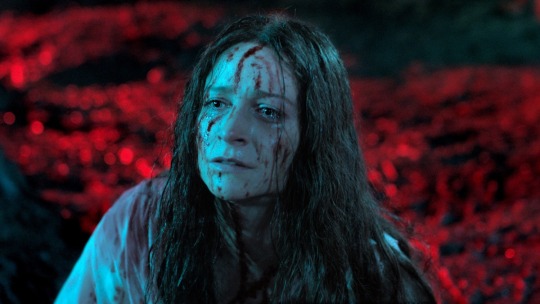
Censor
Directed by Prano Bailey-Bond, written by Bailey-Bond and Anthony Fletcher
The first of several upcoming films inspired by the ‘video nasty’ moral panic over gory horror in mid-’80s Britain, Prano Bailey-Bond leans heavily into both the period and the genre in telling the story of a film censor (a phenomenal Niamh Algar—vulnerable and steely at the same time) who begins to suspect a banned movie may hold the key to her sister’s childhood disappearance. Often dreamlike, occasionally phantasmagorical and repeatedly traumatic, even if the worst gore presented (as seen in the impressively authentic fictional horrors being appraised) appears via a screen, providing a welcome degree of separation.
Nevertheless, Censor is definitely not for the faint of heart, but old-school horror aficionados will squeal with delight at the aesthetic commitment. “I’m so ecstatic that horror is in the hands of immensely talented women going absolutely batshit in front of and behind the camera.” writes Erik. (Same here!) “A great ode to the video-nasty era and paying tribute to the great horror auteurs of the ’80s such as Argento, De Palma and Cronenberg while also doing something new with the genre. Loved this!” writes John, effectively encapsulating Censor’s unfettered film-nerd appeal. —DC

CODA
Written and directed by Siân Heder
A film so earnest it shouldn’t work, with a heart so big it should surely not fit the size of the screen, CODA broke records (the first US dramatic film in Sundance history to win all three top prizes; the 25-million-dollar sale to Apple Studios), and won the world over like no other film. “A unique take on something we’ve seen so much,” writes Amanda, nailing the special appeal of Siân Heder’s coming-of-ager and family portrait. Emilia Jones plays Ruby, the only hearing person in her deaf family, at war between the family business and her passion for singing. While Heder is technically remaking the French film La Famille Bélier, the decision to cast brilliant deaf actors—Troy Kotsur, Marlee Matlin and Daniel Durant—makes this feel brand new.
But it’s not just about representation for the sake of it. A sense of authenticity, in humor as much as affection, shines through. With a script that’s 40 per cent ASL, so many of the jokes are visual gags, poking fun at Tinder and rap music, but a lot of the film’s most poignant moments are silent as well. And in Ruby’s own world, too, choir kids will feel seen. “I approve of this very specific alto representation and the brilliant casting of the entire choir,” Laura confirms in her review. Come for the fearless, empathetic family portrait, stay for the High School Musical vibes that actually ring true. —EK
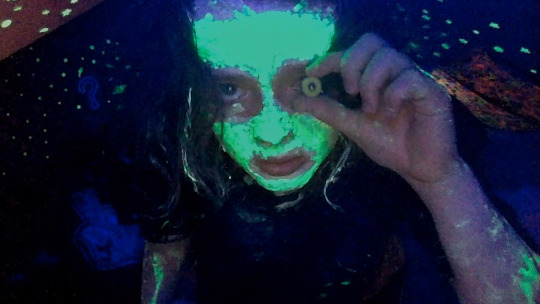
We’re All Going to the World’s Fair
Written and directed by Jane Schoenbrun
Perhaps the most singular addition to the recent flurry of Extremely Online cinema—Searching, Spree, Host, et al—Jane Schoenbrun’s feature debut ushers the viewer into a haunted, hypno-drone miasma of delirium-inducing YouTube time-suck, tenebrous creepypasta lore and painfully intimate webcam confessionals. Featuring an extraordinarily unaffected, fearless performance by newcomer Anna Cobb, the film “unpacks the mythology of adolescence in a way that’s so harrowingly familiar and also so otherworldly”, writes Kristen. Not since Kiyoshi Kurosawa’s Pulse has there been such an eerily lonely, and at times strangely beautiful, evocation of the liminal spaces between virtual and real worlds.
For members of the trans community, it’s also a work that translates that experience to screen with uncommon authenticity. “What Schoenbrun has accomplished with the form of We’re All Going to the World’s Fair is akin to catching a wisp of smoke,” writes Willow, “because the images, mood and aesthetic that they have brought to life is one that is understood completely by trans people as one of familiarity, without also plunging into the obvious melodrama, or liberal back-patting that is usually associated with ‘good’ direct representation.” One of the most original, compelling new voices to emerge from Sundance this year. —AY
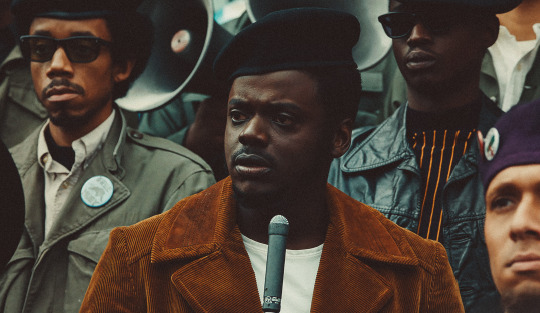
Judas and the Black Messiah
Directed by Shaka King, written by King, Will Berson, Kenneth Lucas and Keith Lucas
It was always going to take a visionary, uncompromising filmmaker to bring the story of Fred Hampton, the deputy chairman of the national Black Panther Party, to life. Shaka King casts Daniel Kaluuya as Hampton, and LaKeith Stanfield as William “Wild Bill” O’Neal, the FBI informant whose betrayal leads to Hampton’s assassination. Both actors have never been better, particularly Kaluuya who Fran Hoepfner calls “entrancing, magnetic, fizzling, romantic, riveting, endlessly watchable.”
Judas and the Black Messiah is an electric, involving watch: not just replaying history by following a certain biopic template. Instead, it’s a film with something to say—on power, on fear, on war and on freedom. “Shaka King’s name better reverberate through the halls of every studio after this,” writes Demi. A talent like this, capable of framing such a revolution, doesn’t come around so often. We’d better listen up. —EK

Pleasure
Directed by Ninja Thyberg, written by Thyberg and Peter Modestij
A24’s first purchase of 2021. Ironically titled on multiple levels, Pleasure is a brutal film that you endure more than enjoy. But one thing you can’t do is forget it. Ninja Thyberg’s debut feature follows a young Swedish woman (Sofia Kappel) who arrives in Los Angeles with dreams of porn stardom under the name ‘Bella Cherry’. Although Bella is clear-eyed about the business she’s getting into, Thyberg doesn’t shy away from any of the awfulness she faces in order to succeed in an industry rife with exploitation and abuse. Bella does make allies, and the film isn’t suggesting that porn is only stocked with villains, but the ultimate cost is clear, even if it ends on an ever-so-slightly ambiguous note.
Touching as it does on ambition, friendship and betrayal in the sex business, Pleasure is often oddly reminiscent of Paul Verhoeven’s Showgirls. Or rather, the gritty film Showgirls was claiming to be, as opposed to the camp classic it became. There’s nothing campy here. Kappel is raw and fearless in the lead, but never lets the viewer lose touch with her humanity. Emma puts it well: “Kappel gives the hardest, most provocative and transfixing performance I’ve seen all festival.” “My whole body was physically tense during this,” writes Gillian, while Keegan perhaps speaks for most when she says “Great film, never want to see it again.” —DC
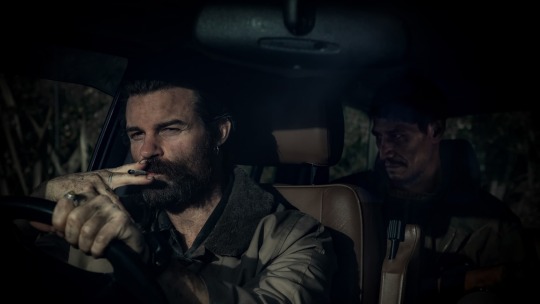
Coming Home in the Dark
Directed by James Ashcroft, written by Ashcroft and Eli Kent
A family camping trip amidst some typically stunnin—and casually foreboding— New Zealand scenery is upended by a shocking rug-pull of violence that gives way to sustained terror represented by Daniel Gillies’ disturbingly calm psychopath. The set-up of this thriller initially suggests a spin on the backwoods brutality thriller, but as Coming Home in the Dark progresses and hope dissipates, the motivations reveal themselves to be much more personal in nature, and informed on a thematic level by New Zealand’s colonial crimes against its Indigenous population. It’s a stark and haunting film that remains disorientating and unpredictable throughout, repeatedly daring the viewer to anticipate what will happen next, only to casually stomp on each glimmer of a positive outcome.
It’s so captivatingly bleak that a viewing of it, as Collins Ezeanyim’s eloquent reaction points out, does not lend itself to completing domestic tasks. The film marks an auspicious debut for director and co-writer James Ashcroft. Jacob writes that he “will probably follow James Ashcroft’s career to the gates of Hell after this one”. Justin hits the nail on the head with his description: “Lean and exceptionally brutal road/revenge film … that trades in genre tropes, especially those of Ozploitation and ’70s Italian exploitation, but contextualizes them in the dark history of its country of origin.” —DC
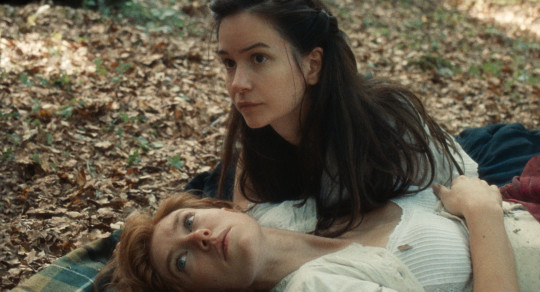
The World to Come
Directed by Mona Fastvold, written by Ron Hansen and Jim Shepard
Mona Fastvold has not made the first, nor probably the last, period romance about forbidden lesbian love. But The World to Come focuses on a specific pocket in time, a world contained in Jim Shepard’s short story ‘Love & Hydrogen’ from within the collection giving the film its name. Katherine Waterston and Vanessa Kirby are Abigail and Tallie, farming neighbors, stifled by their husbands, who find brief moments of solace, of astonishment and joy, together. What shines here is the script, a verbose, delicate narration that emanates beauty more than pretence. “So beautifully restrained and yet I felt everything,” Iana writes.
And you can feel the fluidity and elegance in the way the film sounds, too: composer Daniel Blumberg’s clarinet theme converses with the dialogue and tells you when your heart can break, when you must pause, when the end is near. “So much heartache. So much hunger. So much longing. Waves of love and grief and love and grief,” writes Claira, capturing the ebb and flow of emotion that keeps The World to Come in your mind long after the screen has gone silent. —EK
Related content
The 2021 Sundance Film Festival lineup by Letterboxd rating
Letterboxd’s ‘Official’ Top 50 of 2021
Awards Season 2020-2021: our awards-tracker list
Letterboxd’s Festiville HQ: our home for up-to-the-minute festival coverage
#sundance#sundance film festival#sundance 2021#sundance2021#questlove#summer of soul#black woodstock#shaka king#judas and the black messiah#letterboxd top 50#best of sundance 2021#letterboxd
11 notes
·
View notes
Photo
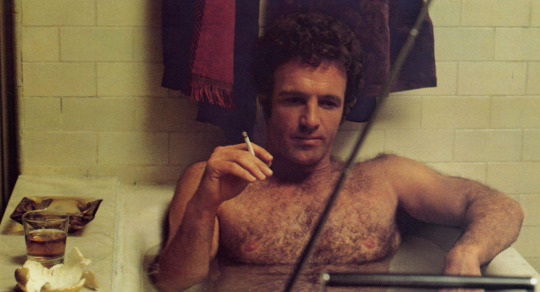
Sundancing.
As the 2021 film festival season kicks off, Sundance Film Festival alumni and this year’s newcomers share their best tips for at-home festival attendance.
With contributions from Joe Talbot, Aneesh Chaganty, Ekwa Msangi, Heidi Ewing, Jesse Moss and Amanda McBaine, Levan Akin, Max Barbakow, Jim Cummings, Sara Hirner and Rosemary Vasquez-Brown, Kentucker Audley and Albert Birney, Alexis Gambis and the Letterboxd Sundance team.
While it’s a small relief not to have to share a bunkbed with Gary from Australia, and go trudging up those Park City slopes in chunky ol’ snow boots, it’s still a challenge to create the ambience that the world premiere of a brilliant new indie film deserves. So, as well as creating a new, official Letterboxd festival hub (Festiville—give it a follow to receive festival updates in your main activity feed), we’ve also called in some friends to help us overcome the barrier of a lonely room, a smaller screen and a too-familiar couch.
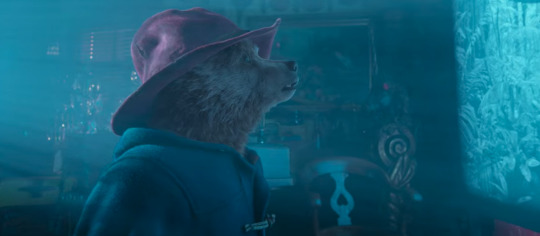
At home, you can sit as close to the screen as you can bear. (‘Paddington’, 2014.)
Bring the mountain to you.
How best to recreate the specific feeling of trying not to break your neck while running across the icy carpark between the Doubletree and the Holiday Village 4 during a tight turnaround? Letterboxd’s West Coast editor Dominic Corry advises getting into the Park City swing of things right from breakfast: “Place a headshot next to your coffee machine to replicate the experience of bumping into an A-lister at the Starbucks in Fresh Market”.
Before your first screening of the day, say Boys State directors Jesse Moss and Amanda McBaine (Sundance 2020), “Stand outside in the cold for sixty minutes before viewing the film, then watch the film while wearing a very heavy parka, and realize you’re very hot twenty minutes into the movie and have to wrestle your parka off whilst not disturbing your fellow viewers.”
Or, don’t even bother trying to remove those layers, says And Then We Danced writer-director Levan Akin (Sundance 2020): “Recreate the sweat-soaked sensation I had by dressing in thermal long johns to outsmart the cold, only to sit through screenings in a pool of your own sweat. Rookie mistake!”
Between screenings, you have a couple of options. “Hit that StairMaster between virtual engagements to simulate the high mountain altitude,” advises Palm Springs director Max Barbakow (Sundance 2020), ”and don’t forget that chlorophyll to catch your wind!”
Kentucker Audley and Albert Birney, writers and directors of Strawberry Mansion (Sundance 2021) have an alternate suggestion: “After a screening, we recommend turning off the heat in your home, getting into your bathtub (imagining it’s a hot tub), and once it’s nice and freezing in your house, get out of the tub with wet feet, step directly into your snow boats and race to the nearest towel, which for some reason is nowhere near you. Then watch another movie and repeat the process.” Seems eerily legit.
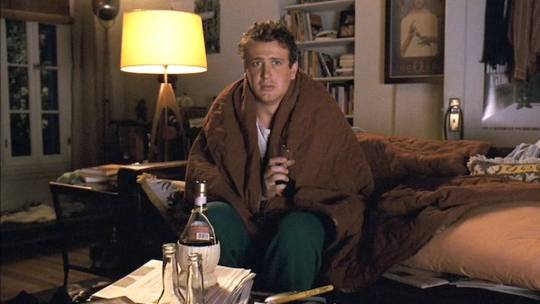
There’s no corkage charged for BYO in the home cinema. (‘Forgetting Sarah Marshall’, 2008.)
Creating those creature comforts.
For those of you who have long since accepted that we’re on the sofa rather than the slopes this Sundance, the trick is to make home as inviting as possible, despite its being far too familiar these days. That could mean moving the screen from its usual spot. Heidi Ewing, writer and director of I Carry You With Me (Sundance 2020) has a three-step plan: “1. Carmel-corn 2. Bathtub with bubbles 3. Play it loud—bathroom-tile acoustics will make it all feel bigger and boomier. That’s my sage advice.”
“Definitely co-sign the bathtub!” agrees Letterboxd’s London correspondent Ella Kemp. “And I’d also suggest watching the midnight-leaning stuff—big horror, big genre, big WTF—first thing in the morning, if you can. I do not have the same energy late at night in my own at home as I do with a sold-out crowd.”

Expose your folks to a whole new world—make them watch Midnight category films with you over breakfast. (‘Good Morning’, 1959.)
Indeed, energy for film festivals is a thing whether you’re an in-person or satellite viewer—this applies to mental energy, too. “If you’re ever stressed or tired, watch a documentary to reset yourself,” says Jim Cummings, writer and director, Thunder Road short (Grand Jury winner, Sundance 2016), producer, Beast Beast (Sundance 2020).
And, given it’s a seven-day-long haul, feel free to throw cooking plans out the window and follow the Park City diet, in which you “eat nothing but finger foods for the duration of the festival,” according to Moss and McBaine. Or, as Ekwa Msangi, writer-director of Farewell Amor (Sundance 2020) recommends, “get some deliciously flavored popcorn and a hot drink for afterwards!”
Another at-home tip from Corry: “Don’t turn the lights on when you get up to go to the bathroom mid-movie, so as to recreate the sensation of your eyes struggling to adjust to the light in the restroom.”
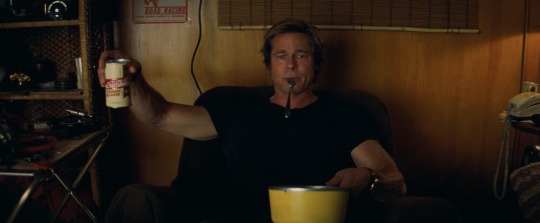
Mac ’n’ cheese and a cold one for the last viewing of the day. (‘Once Upon a Time in… Hollywood’, 2019.)
Hell is other people (but animals are cool).
Not all of us live alone, and not all of us live with film lovers. Company is welcome, interruptions are to be expected, but do set some boundaries and decide what you will and won’t compromise on. “If you’ve got to bargain with roommates and family members for your turn to use the TV, be intentional about sound!” advises Letterboxd contributor, Selome Hailu. “Don’t compromise on music documentaries or well-scored horror, but rom-com dialogue might still sound okay with your laptop speaker.”
Housemates not human? That’s no problem for Alexis Gambis, writer, director and co-editor, Son of Monarchs (Sundance 2021): “Make room for your pets, let them be the film critics this time around.”
Importantly, says Cummings, “Be kind to everyone.” Whether you’re at a satellite screening, joining a festival event online or talking about the films on your social channels, “everyone is here to watch crazy weird movies. Remind yourself that it’s all about weird cinema and the creators. Watch movies!”
“And definitely stay for the Q&As,” say Moss and McBaine. “Always incredible.”
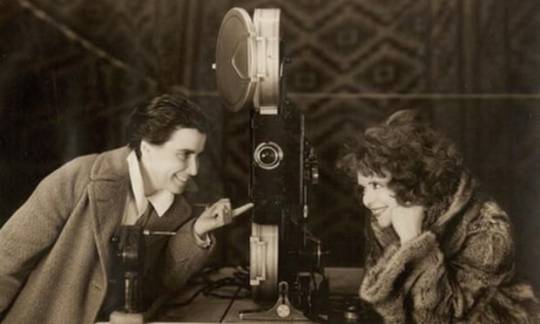
Director Dorothy Arzner and star Clara Bow are dressed to impress. (‘The Wild Party’, 1929.)
Watch the premieres as their makers intended.
Look, filmmakers know what they’re up against in 2021, but it doesn’t stop them dreaming big when it comes to how we see their films for the first time. Sara Hirner and Rosemary Vasquez-Brown, directors of the Sundance 2021 short GNT, have put some thought into this:
“We demand that GNT be viewed in one of two very specific ways, and since we have no control over ourselves or the world at large, we urge you to at least pay us this small kindness!
Option A: You shall view GNT at 3:00am, sans pants, with two-day-old pizza and your laptop perched on your titties.
Option B: You shall dress in your finest garb, slather your face in makeup (please consult the swaths of teenage beauty gurus if you’re unsure on how to accomplish this task), and adorn yourself in your highest heels. These must all be the same color (tone variations will be accepted). Crack open your cheapest available sparkling wine and get to it. We hope you enjoy the show.”
For those whose Sundance dress code extends only to bed-wear, Msangi pleads: “If you’re staying in your pajamas, at least put on a cool beanie to spice things up!”

Sharing is caring. (‘Shithouse’, 2020.)
Tweets, or it didn’t happen.
Finally, and most essentially, Aneesh Chaganty, writer and director of Searching (Sundance 2018), declares: “It’s not a Sundance hit without insane amounts of buzz. If you like it, tell everyone you know.”
After all, it’s what we’re here for… isn’t it? The last word goes to Joe Talbot, co-writer and director of The Last Black Man in San Francisco (Sundance 2019): “Since so many people at Sundance like to say that, between all the meetings and panels, they just haven’t had a chance to see any movies, let 2021 be the year that if you haven’t seen the movies, you admit it’s because you just don’t like movies.” Boom.
Related content
The ten most anticipated Sundance 2021 premieres according to Letterboxd members
The full line-up of the 37th Sundance Film Festival 2021
All the Dramatic Grand Jury/World Cinema Dramatic Grand Jury winners from Sundances past
Follow Festiville on Letterboxd for daily updates
The Sundance Film Festival runs from January 28 to February 23. Thanks to all the filmmakers for advice, and good luck to the 2021 festival fam!
#Sundance#sundance 2021#sundance film festival#sundance2021#film festival#virtual film festival#online film festival#indie film#independent film#letterboxd#jim cummings#aneesh chaganty
4 notes
·
View notes